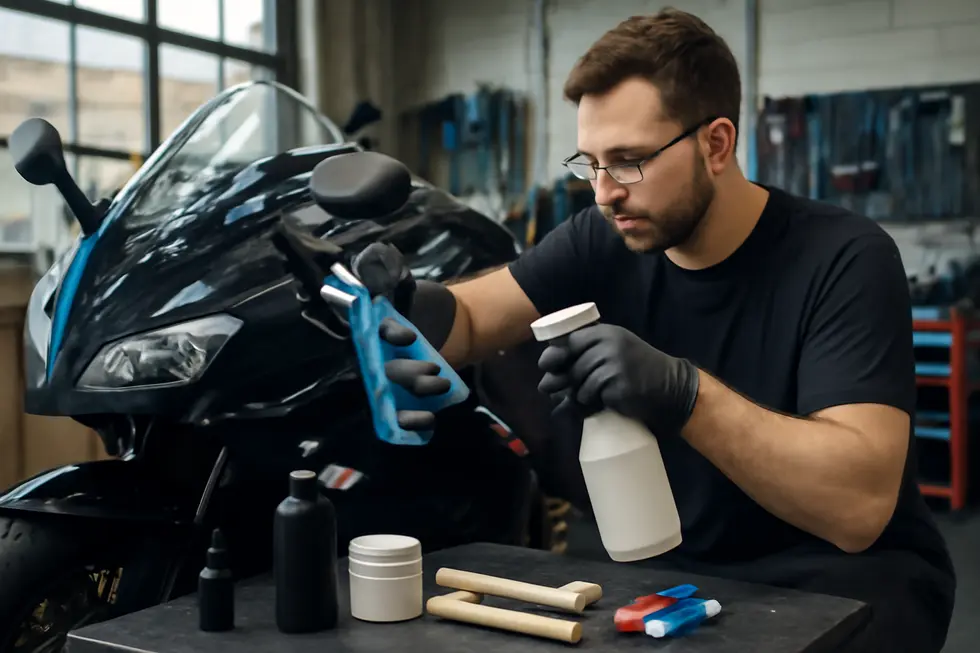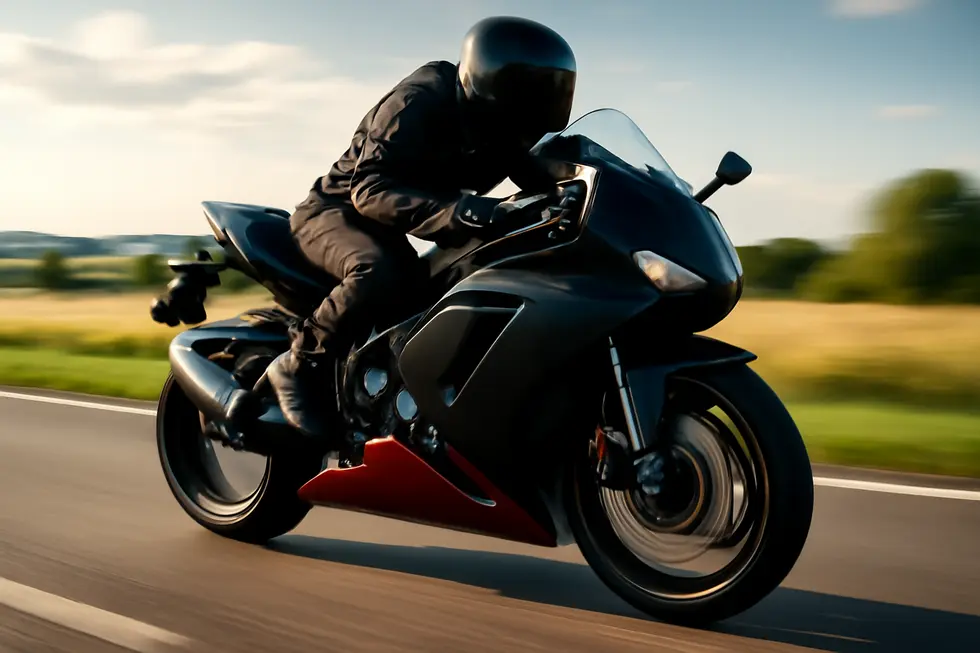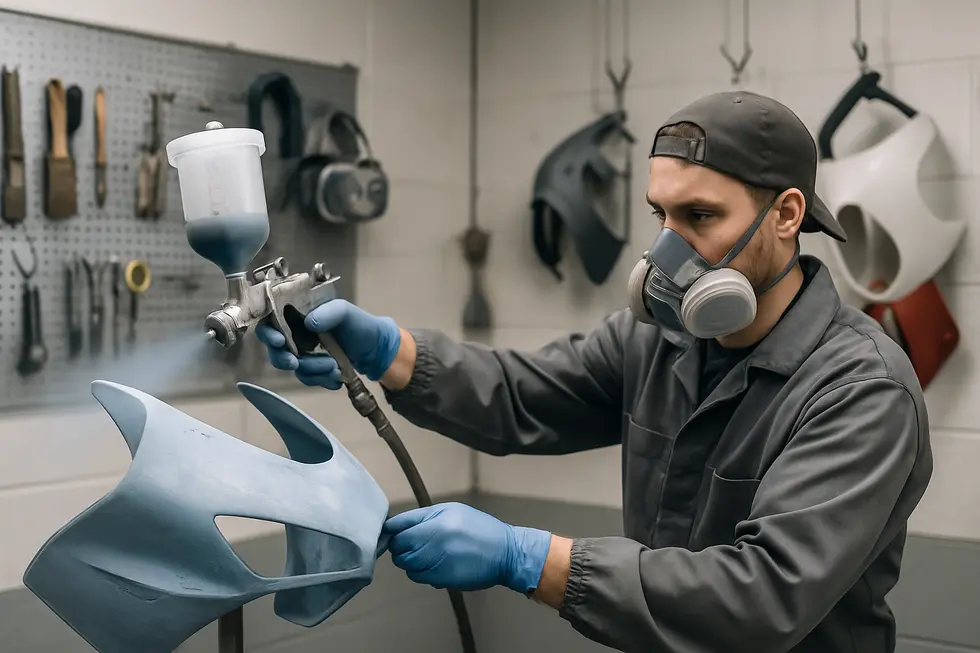Unlocking the Potential of Motorcycle Fairing Hardware for Your Business
October 7, 2025 | by summitfairings
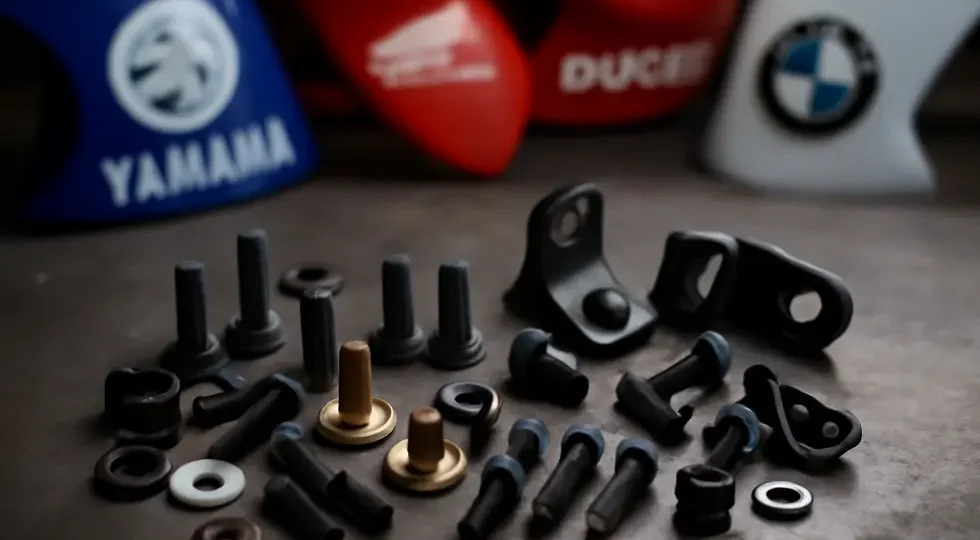
Introduction
Motorcycle fairing hardware represents a crucial yet often overlooked segment in motorcycle maintenance and customization. For business owners in the motorcycle aftermarket industry, understanding the nuances of fairing hardware—from universal kits to specialized mounting solutions—can unlock new sales opportunities and deepen customer satisfaction. This hardware extends beyond basic bolts and screws, encompassing a spectrum of options that blend durability, aesthetics, and ease of installation. The first chapter explores the differences and advantages of universal versus model-specific hardware kits, guiding businesses on stock versatility and customer targeting. The next chapter delves into the materials, finishes, and customization potentials that distinguish everyday products from premium offerings, helping businesses cater to riders seeking both function and style. Finally, the third chapter highlights specialized mounting solutions and comprehensive hardware kits designed for racing applications, ease of maintenance, and complete fairing replacements, emphasizing the value-added propositions businesses can offer. Together, these insights provide a well-rounded understanding of motorcycle fairing hardware as both a functional necessity and lucrative business opportunity.
Tables of Contents
Chapter 1: Universal and Model-Specific Motorcycle Fairing Hardware Kits
- Wide-Ranging Compatibility and Practicality of Universal Fairing Hardware Kits
- Tailored Precision and Style: The Advantages of Model-Specific Motorcycle Fairing Hardware
- Balancing Strength, Style, and Fit: Material Choices in Universal and Model-Specific Fairing Hardware
- Navigating Installation Challenges: Ensuring Precision and Durability in Motorcycle Fairing Hardware Kits
- Balancing Fit and Style: Customization Trends and Market Reach of Motorcycle Fairing Hardware Kits
Chapter 2: Materials, Finishes, and Customization of Motorcycle Fairing Hardware
- Choosing the Right Materials: How Aluminum, Stainless Steel, and Titanium Shape Performance and Longevity
- Enhancing Durability and Style: The Role of Glossy, Anodized, and Primer Finishes in Fairing Hardware
- Vibrant Finishes and Precision Tailoring: Enhancing Motorcycle Fairing Hardware with Custom Colors and Fitment
- Choosing Fairing Materials: How Plastic, Fiberglass, and Urethane Influence Weight and Durability
- Balancing Quality and Cost: How Premium Manufacturing Shapes Motorcycle Fairing Hardware Value
Chapter 3: Specialized Mounting and Comprehensive Motorcycle Fairing Hardware Solutions
- Cutting-Edge Technologies Enhancing Motorcycle Fairing Mounting and Hardware Systems
- Emerging Economic Forces and Market Dynamics Shaping Motorcycle Fairing Hardware Innovation
- How Geopolitical Forces Shape the Evolution of Motorcycle Fairing Hardware Innovations
- Evolving Consumer Priorities Driving Innovation in Motorcycle Fairing Hardware
- Balancing Material Innovation and Engineering Precision in Advanced Motorcycle Fairing Hardware
Chapter 1: Universal and Model-Specific Motorcycle Fairing Hardware Kits
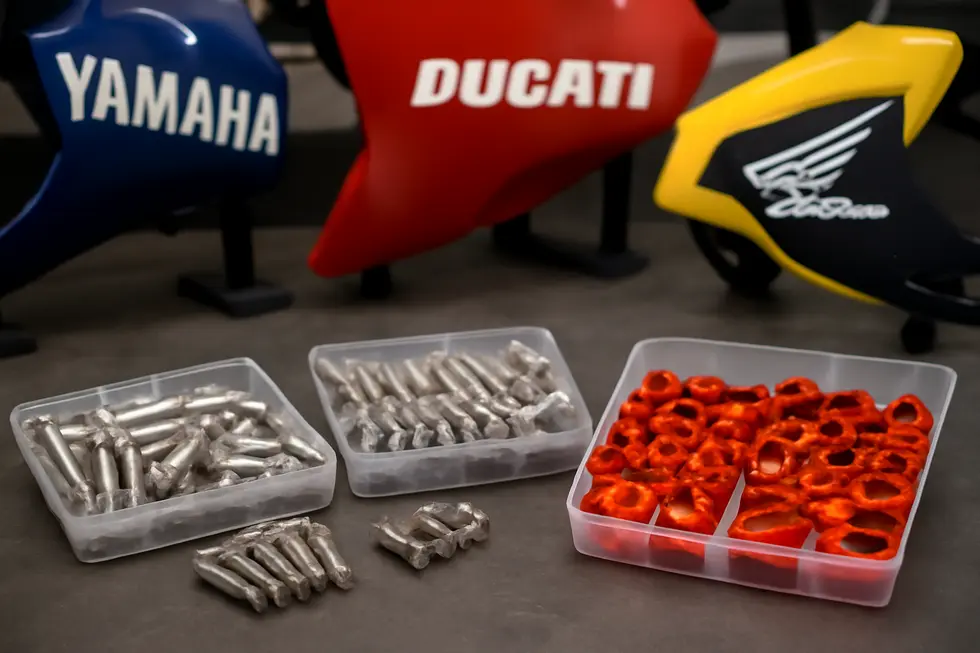
1. Wide-Ranging Compatibility and Practicality of Universal Fairing Hardware Kits
Wide-Ranging Compatibility and Practicality of Universal Fairing Hardware Kits
Universal motorcycle fairing hardware kits serve as versatile solutions for riders seeking reliable and broadly compatible fasteners to secure their fairings. Designed to accommodate a variety of sportbikes and cruisers from multiple manufacturers—including well-known brands such as Honda, Yamaha, Ducati, Kawasaki, Suzuki, and BMW—these kits provide a convenient alternative to sourcing model-specific hardware.
By including a comprehensive assortment of bolts, screws, clips, and washers in popular sizes like M5 and M6, universal kits cover a wide range of mounting points needed during repairs or customizations. Typically composed of corrosion-resistant materials such as stainless steel and aluminum, the hardware withstands harsh riding conditions, offering durability without compromising weight.
The inclusiveness of these kits often spans over a hundred pieces, allowing riders to replace or upgrade several components with one purchase. This abundance reduces downtime and simplifies maintenance by providing all common hardware variations in a single set. Moreover, the straightforward design eases installation as the parts generally fit many different panel types without requiring model-specific instructions.
Unlike other universal accessories that focus on functional add-ons, universal fairing hardware kits prioritize size variety and material quality to ensure secure attachment and longevity of bodywork. This broad applicability enhances the practical value for riders who own multiple bikes, work in shops, or prefer a ready stock of fasteners for future needs.
Such kits contribute not only to efficient maintenance but also to customizing a bike’s appearance or functionality without frequent parts searching. To explore how universal fastener options can support your motorcycle maintenance and styling, visit Summit Fairings’ detailed blog on comprehensive hardware selections.
For more insights, see Explore the Best Motorcycle Fairings at Summit Fairings.
2. Tailored Precision and Style: The Advantages of Model-Specific Motorcycle Fairing Hardware
Model-specific motorcycle fairing hardware kits provide a level of precision and customization unmatched by universal options. Engineered to fit the exact make, model, and often year of a motorcycle, these kits ensure that each bolt, washer, and clip aligns flawlessly with the bike’s factory mounting points. This precision fit not only secures the fairings with structural integrity but also preserves a clean, factory-quality appearance that avoids the need for modifications or additional adjustments.
Beyond perfect fitment, these kits frequently offer aesthetic enhancements through options like anodized finishes in various colors, allowing riders to add a personalized touch to their motorcycles. Such customization elevates the bike’s visual appeal while maintaining the professional look of factory-installed components. Made from lightweight, corrosion-resistant materials such as anodized aluminum and OEM-grade ABS plastic, the hardware combines durability with style.
Installation is straightforward, as the kits include every necessary fastener and accessory designed for a bolt-on experience. This simplicity encourages maintenance and upgrades without professional assistance or special tools, making it accessible for most riders.
By targeting specific models, these hardware kits deliver both functional and stylistic improvements, striking a balance between enhancing durability and refining the motorcycle’s overall look. For those seeking a precise, elegant upgrade that blends seamlessly with factory fairings, model-specific kits offer an ideal solution. To explore a spectrum of high-quality fairing options that complement these hardware kits, visit our comprehensive collection at Summit Fairings.
3. Balancing Strength, Style, and Fit: Material Choices in Universal and Model-Specific Fairing Hardware
Material selection stands at the core of both universal and model-specific motorcycle fairing hardware kits, shaping their durability, compatibility, and aesthetic appeal. Common materials such as aluminum and stainless steel dominate due to their blend of strength, corrosion resistance, and manageable weight. Aluminum’s lightweight nature coupled with anodized finishes offers both practical durability and a polished look, ideal for riders prioritizing both form and function. Stainless steel, often favored in universal kits, ensures robust corrosion resistance and fits a broad range of motorcycle models thanks to its standardized threading sizes, making it a reliable all-around choice.
Conversely, model-specific kits leverage detailed engineering to match exact frame and fairing mounting points, which allows for more tailored material use. These kits often incorporate lightweight aluminum variants or specialized coatings to complement a bike’s performance characteristics or styling. In premium and racing scenarios, titanium fasteners emerge as a top-tier option, prized for their exceptional strength-to-weight ratio and corrosion resistance—though at greater cost, they enhance reliability without adding unnecessary heft.
Beyond mechanical properties, materials also influence the rider’s customization experience. Anodized or powder-coated finishes in vibrant colors or discreet metallic tones enable rider personalization, blending hardware into a bike’s overall design or using it as a subtle accent. For universal kits, achieving this balance is more challenging due to the diverse range of motorcycles they serve, so finishes tend to be more neutral yet durable.
Ultimately, whether selecting a universal or a model-specific fairing hardware kit, material choices reflect a compromise between fitment precision, longevity, weight management, and style. Understanding these trade-offs can help riders make informed decisions tailored to their motorcycle’s needs and their personal preferences. For a broader look at quality hardware options, explore detailed resources at Explore Summit Fairings, Your Go-To Destination for Motorcycle Fairings.
4. Navigating Installation Challenges: Ensuring Precision and Durability in Motorcycle Fairing Hardware Kits
Installing motorcycle fairing hardware demands close attention to fitment, material compatibility, and fastening integrity, whether using universal or model-specific kits. Universal kits bring flexibility but often require modifications like drilling or trimming to align brackets and mounting points perfectly, presenting a challenge in maintaining structural stability without stressing the fairing. Model-specific kits, designed to match factory mounting points, simplify alignment yet still call for careful handling to avoid cracks or stripped threads.
Material differences in fairings—ABS plastic, fiberglass, or carbon fiber—add complexity, as each demands tailored preparation and adhesive selection to guarantee strong bonds. ABS plastics require plastic-compatible adhesives and light surface sanding, while fiberglass benefits from resin adhesives paired with cloth reinforcement. Choosing high-grade stainless steel hardware minimizes corrosion risks, critical in exposed environments, and strengthens the overall assembly.
Proper torque application is pivotal; over-tightening can damage fairings, while under-tightening risks loosening under vibration stresses. Adhering strictly to torque specifications and employing correct tools are essential steps to preserve hardware longevity and safety. Environmental factors such as temperature changes and humidity may also influence adhesive curing and hardware reliability, warranting controlled conditions during installation.
To reduce errors, pre-fitting components and meticulously marking drill points enhance accuracy and minimize unnecessary alterations. When installations grow complex or uncertain, professional expertise can provide valuable guidance and prevent costly mistakes. For detailed material-specific adhesive and preparation techniques, consulting comprehensive resources like Summit Fairings’ expert advice on bonding methods ensures a successful and durable installation.
5. Balancing Fit and Style: Customization Trends and Market Reach of Motorcycle Fairing Hardware Kits
Motorcycle fairing hardware kits come in two primary forms: model-specific and universal, each catering to different customization needs and market demands. Model-specific kits are crafted for precise compatibility, ensuring seamless integration with particular motorcycle makes and models. This precision not only simplifies installation but also enables targeted aesthetic upgrades, such as anodized bolts and colored washers tailored to individual bike lines. Riders seeking perfect fitment and a factory-like finish often favor these kits, which are typically offered by specialized aftermarket suppliers focused on distinct brands.
Conversely, universal kits prioritize versatility and broader market availability. Designed to cover a wide array of motorcycles, these kits often require minor adjustments during installation, yet they excel in offering expansive customization options. Riders can choose from various anodized finishes, bolt caps, and accessory combinations to personalize their motorcycles across multiple models. This flexibility makes universal kits popular among those who own multiple bikes or prefer a wider range of styling choices without being tied to a single model.
The market reflects this diversity: specialized manufacturers highlight model-specific kits tailored for seamless fit and style upgrades, while larger aftermarket providers stock universal kits that appeal to cost-conscious buyers and those wanting adaptable hardware solutions. Beyond hardware, riders often complement these kits with graphic and decal sets that also come in model-specific or universal designs, further enriching the customization spectrum.
Understanding these options helps riders make informed choices based on desired aesthetics, installation ease, and budget. For a deeper dive into compatible components and styling, explore resources that showcase extensive selections of motorcycle fairings and hardware.
Chapter 2: Materials, Finishes, and Customization of Motorcycle Fairing Hardware
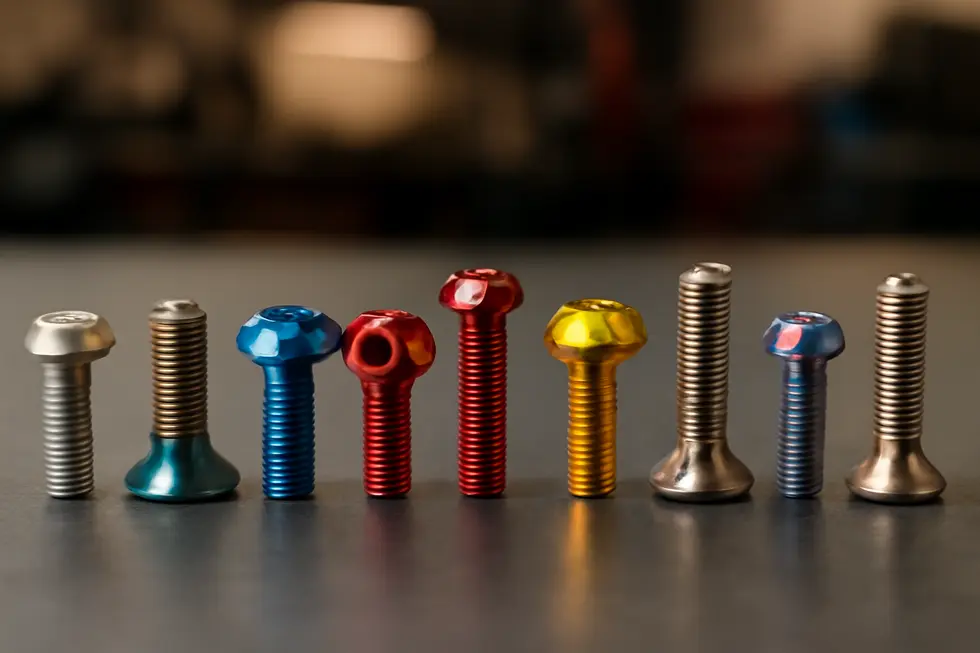
1. Choosing the Right Materials: How Aluminum, Stainless Steel, and Titanium Shape Performance and Longevity
Motorcycle fairing hardware relies heavily on material selection, which significantly influences both performance and durability. Aluminum, stainless steel, and titanium are the primary choices, each offering unique benefits tailored to different riding needs and styles. Aluminum is prized for its light weight and natural corrosion resistance, making it ideal for riders seeking to reduce overall bike weight. This is particularly advantageous in sport and racing motorcycles, where agility and acceleration are paramount. Its ability to maintain strength while cutting down on mass enhances handling without sacrificing security.
Stainless steel, by contrast, emphasizes toughness and resilience. Its heavier composition grants exceptional strength and outstanding resistance to environmental wear, perfect for motorcycles frequently exposed to harsh weather or long-distance touring. Stainless steel fasteners provide reliability and low maintenance, making them a preferred option for riders who value durability over every last gram of weight savings.
Titanium strikes an impressive balance between these two, combining aluminum’s lightweight properties with stainless steel’s remarkable strength and corrosion resistance. This premium material offers superior longevity and performance, often favored in high-end or racing applications where both strength and minimal weight dictate competitive advantage. Its resistance to harsh elements ensures that bolts and screws maintain integrity over extended use, reducing the need for frequent replacements.
When selecting fairing hardware, consideration of these materials helps tailor the motorcycle’s function—whether prioritizing speed and weight reduction or ruggedness and endurance. For more in-depth exploration of fairing options and hardware customization, review the comprehensive insights at Summit Fairings’ blog, a valuable resource dedicated to motorcycle fairings and related components.
2. Enhancing Durability and Style: The Role of Glossy, Anodized, and Primer Finishes in Fairing Hardware
Motorcycle fairing hardware achieves both longevity and visual appeal through carefully selected finishes that protect metal surfaces and elevate style. Primer coatings serve as a critical first step, applied to bare metal or plastic components to ensure optimal adhesion for subsequent layers. Beyond producing a smooth, uniform base, primers enhance corrosion resistance, preventing rust from developing under paint or clear coats — a vital characteristic for hardware exposed to weather and road debris.
Anodized finishes are a top choice for aluminum fasteners, created via an electrochemical process that thickens the oxide layer. This treatment enhances surface hardness and greatly improves resistance to wear and corrosion. Importantly, anodizing allows for vibrant, chip-resistant colors like black, red, and blue, making it popular both for protecting hardware and providing eye-catching customization options that last without fading.
Glossy finishes add a polished shine that reflects light, intensifying the hardware’s visual presence. They’re commonly applied as clear coats over anodized or painted surfaces to guard against minor scratches and UV damage, sustaining a fresh, bright appearance through daily use. Combining anodizing with a glossy topcoat offers a balanced finish—durable, colorful, and sleek.
This layered approach of primer, anodizing, and glossy coatings maximizes both toughness and aesthetic impact in fairing hardware. Riders seeking hardware that withstands harsh conditions while enhancing their bike’s style will often find these finishes indispensable. For more insights on hardware customization, explore the collection of options available at Summit Fairings.
3. Vibrant Finishes and Precision Tailoring: Enhancing Motorcycle Fairing Hardware with Custom Colors and Fitment
Customization of motorcycle fairing hardware elevates both the visual appeal and functional integration of a bike’s bodywork. A cornerstone of this customization is the use of colored anodized bolts, which offer durable, corrosion-resistant finishes without paint. These bolts, typically crafted from aluminum or titanium, come in vivid hues that maintain their luster under harsh riding conditions. By swapping standard fasteners for anodized ones, riders inject personality and style directly into their fairings, complementing or contrasting the bike’s paint scheme.
Equally impactful is the customization of fairing finishes themselves. High-quality aftermarket fairings often feature advanced paint techniques such as candy coats with rich depth, carbon fiber patterns, and multi-layer UV-resistant applications. These detailed finishes do more than beautify; they protect the underlying material and maintain vibrancy over time, even against sun exposure and abrasions. Custom paints can be tailored to feature unique logos or color themes, making the motorcycle truly one-of-a-kind.
Precision fitment rounds out customization by ensuring that upgraded hardware and painted fairings integrate seamlessly with the motorcycle. This attention to detail reduces installation difficulty and enhances the overall durability of the setup. Specialized mounting components designed specifically for certain makes and models allow for neat, secure attachment points that match OEM standards, avoiding fit gaps and alignment issues.
Together, these customization elements—vivid anodized colors, high-performance paint finishes, and exact fitment options—enable riders to not only personalize their motorcycles’ aesthetic but also optimize the practical aspects of fairing hardware. For insights on selecting aftermarket fairings that match your customization goals, explore this resource on affordable motorcycle fairings.
4. Choosing Fairing Materials: How Plastic, Fiberglass, and Urethane Influence Weight and Durability
Motorcycle fairings rely on carefully chosen materials that balance weight, strength, and resistance to wear and impact. Among the most common are ABS plastic, fiberglass combined with polyester resin, and urethane-based compounds. ABS plastic is prized for its toughness and lightweight nature, making it ideal for mass-produced fairings where consistent molding and cost efficiency are key. It offers moderate impact and abrasion resistance, though UV exposure can cause brittleness over time, a factor that affects long-term durability. Repairs of ABS fairings typically involve specialized adhesive solutions that maintain flexibility under vibration.
Fiberglass reinforced with polyester resin creates a heavier but significantly stronger structure. This combination delivers excellent tensile strength and rigidity superior to standard plastics, ideal for custom or aftermarket fairings. However, polyester resin demands protective coatings like gel coats or paint to shield against UV degradation. The repair process is more complex, requiring resin and fiberglass layering to restore toughness and shape.
Urethane materials, especially rigid castable urethanes, provide a balance of hardness and elasticity unattainable with conventional plastics or composites alone. While flexible urethane foams mainly serve cushioning roles behind fairings, rigid urethanes have potential for specialized structural parts or impact zones due to their energy absorption capabilities. Still, these materials are less common in primary bodywork compared to ABS or fiberglass blends.
Understanding these material characteristics is essential when selecting fairing hardware and panels that meet specific rider needs for performance, protection, and aesthetic customization. For a deeper dive into how these materials interact with repair products and adhesives, the detailed guide at Summit Fairings offers valuable insights.
5. Balancing Quality and Cost: How Premium Manufacturing Shapes Motorcycle Fairing Hardware Value
Selecting motorcycle fairing hardware demands a careful balance between quality, durability, and cost. Premium manufacturers invest in precision machining and advanced finishing techniques such as anodizing, which enhances corrosion resistance and offers vibrant color customization. These processes ensure hardware not only fits perfectly but withstands daily wear and harsh weather—qualities essential for maintaining both function and aesthetics over time. Typically, premium hardware sets feature high-grade aluminum alloys or stainless steel, contributing to greater longevity and a refined appearance that stock or budget options often lack.
Conversely, more affordable aftermarket hardware tends to use lower-cost metals and simplified finishes. While attractive for their initial price points, these options can suffer from inconsistent fitment, reduced durability, and vulnerabilities like corrosion or cracking. This trade-off often leads to higher long-term maintenance or replacement costs, negating their upfront savings. Beyond material and finish, premium brands frequently provide warranties, thorough quality controls, and customer support that add tangible value by easing installation and ensuring compatibility.
Investing in premium fairing hardware upfront pays off through enhanced performance, style, and reliability. However, budget-conscious riders may opt for economical alternatives, understanding the potential need for future repairs. Understanding this spectrum allows motorcycle owners to make informed choices, balancing immediate cost constraints against long-term satisfaction and the visual impact of their fairings. For those seeking both affordability and variety in motorcycle fairings and hardware, exploring specialized sources can offer valuable insights and options.
Chapter 3: Specialized Mounting and Comprehensive Motorcycle Fairing Hardware Solutions
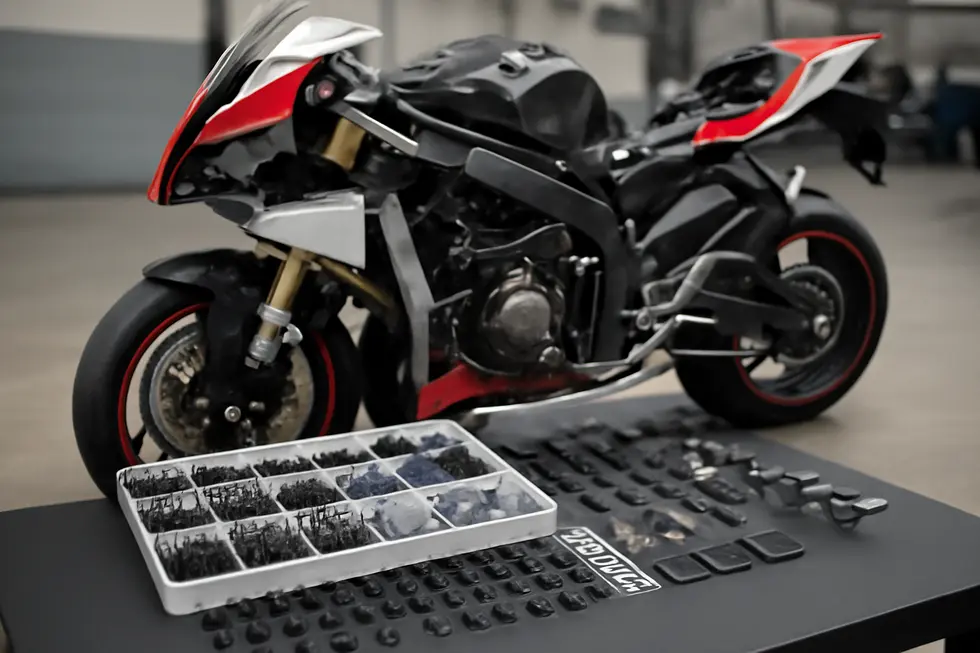
1. Cutting-Edge Technologies Enhancing Motorcycle Fairing Mounting and Hardware Systems
Innovations in motorcycle fairing hardware have transformed mounting solutions, advancing ease of installation, durability, and rider customization. Modern systems integrate cutting-edge adhesives developed with polymer chemistry and nanotechnology, creating flexible yet resilient bonds on diverse materials like ABS plastic and carbon fiber. These advanced adhesives withstand vibration, temperature shifts, and UV exposure, significantly improving the longevity and finish of repaired or replaced fairings.
Alongside adhesives, adjustable mounting kits provide personalized ergonomic positioning, blending seamlessly with the motorcycle frame. These mounts offer stability without compromising fairing aesthetics, catering to rider comfort on varied journeys. Complementing these are tool-less quick-release systems that enable swift assembly and removal of fairings and windshields. Designed for corrosion resistance and custom fit, these solutions greatly simplify maintenance and seasonal swaps.
Universal mounting kits continue to excel by using durable powder-coated steel brackets with adaptable fittings, securing a clean front-end look while accommodating different fork sizes and headlight setups. On the manufacturing front, premium OEM-grade ABS coupled with precision injection molding and multi-stage painting enhances both durability and appearance. Integrated heat shields further protect fairings from damage, ensuring a lasting, premium finish.
Specialized mounting hardware for accessories addresses off-road and travel demands through frame-integrated toolboxes and rugged attachment points. This holistic approach to fairing hardware balances form, function, and modularity, meeting the mechanical stresses and ergonomic needs unique to motorcycling. For more insight into available motorcycle fairing options and innovations, explore the comprehensive resource at Summit Fairings.
2. Emerging Economic Forces and Market Dynamics Shaping Motorcycle Fairing Hardware Innovation
The market for specialized mounting and comprehensive motorcycle fairing hardware is rapidly evolving, driven by rider demands for tailored comfort, enhanced performance, and personalized aesthetics. Economic forces influence this sector profoundly, as consumers seek both exact-fit and versatile universal hardware kits that balance precision with broad compatibility. This dual demand sustains a diverse ecosystem of manufacturers who address OEM replacements as well as aftermarket customization.
Advanced materials play a pivotal role in this transformation. Lightweight composites and fiber-reinforced polymers are increasingly integrated with traditional metal fasteners, offering superior strength without added weight. This fusion reflects a wider technological shift toward efficiency and sustainability, mirroring progress seen in automotive and cycling industries. Riders now expect hardware not only to secure fairings effectively but also to contribute to overall bike performance and style.
Comprehensive hardware kits tailored for specific motorcycle models simplify installation and repair, enhancing user experience and fostering brand loyalty. Meanwhile, adjustable mounting options cater to ergonomic preferences, extending comfort during longer rides. The interplay between innovation and economic conditions encourages niche suppliers to innovate, even as broader market uncertainties pose challenges.
Overall, the motorcycle fairing hardware sector thrives by merging durability, customization, and technological advances. This dynamic drives both industry growth and richer choices for riders seeking function and flair in their hardware components. For insights into comprehensive fairing options, visit Discover Affordable Motorcycle Fairings at Summit Fairings.
3. How Geopolitical Forces Shape the Evolution of Motorcycle Fairing Hardware Innovations
The advancement of specialized mounting and comprehensive motorcycle fairing hardware is deeply intertwined with global geopolitical dynamics. Central to this relationship is the influence of international supply chains and trade policies that govern the availability and cost of critical materials like aluminum alloys, titanium, and innovative composites. Political stability and trade agreements determine steady access to these materials, while tariffs or export restrictions can abruptly disrupt production cycles, pushing manufacturers to seek alternative suppliers or adjust designs.
Regional expertise plays a vital role in pushing material innovation forward. In certain global hubs, concentrated research and development efforts have yielded patented composites that transform fairing performance by reducing weight without compromising strength—pivotal for competitive racing and high-performance motorcycles. These breakthroughs often emerge from internationally funded collaborations, where alliances and programs enable shared technological progress and cost optimization.
Moreover, market demand varies widely based on regional economic conditions and cultural preferences, compelling manufacturers to tailor their hardware kits accordingly. For instance, European and Asian markets show strong preference for aerodynamic, lightweight hardware suited to racing, whereas other markets favor rugged, cost-effective solutions for everyday commuting.
Currency fluctuations and economic uncertainties in manufacturing centers further impact investment decisions and innovation pace in hardware production. All these geopolitical elements collectively dictate the design choices, durability, and even the aesthetic options available in fairing hardware today.
Understanding these global influences provides insight into why motorcycle fairing hardware availability and innovation differ across regions and highlights the importance of adaptable, well-researched mounting solutions. For riders interested in exploring diverse fairing options shaped by these factors, discover affordable motorcycle fairings at Summit Fairings offers a comprehensive resource that reflects current market trends and innovations.
4. Evolving Consumer Priorities Driving Innovation in Motorcycle Fairing Hardware
The motorcycle community’s growing interest in specialized mounting and comprehensive fairing hardware stems from evolving consumer priorities emphasizing both form and function. Riders today seek hardware solutions that not only secure fairings reliably but also offer extensive customization possibilities. This demand drives the popularity of anodized and color-matched components that replace standard bolts and clips with hardware reflecting individual style preferences while maintaining durability.
Beyond aesthetics, consumer preferences highlight a balance between quality and affordability. The market reflects a broad spectrum—from budget-friendly aftermarket kits that satisfy practical needs to premium offerings incorporating high-grade materials like titanium, designed for superior corrosion resistance and performance. Such diversity caters to riders across different segments, from daily commuters to sportbike enthusiasts.
Integral to these trends is the integration of comprehensive kits that go beyond simple fasteners. Some solutions bundle mounting hardware with technological enhancements, supporting accessories such as built-in infotainment compatibility. This integration aligns with consumer expectations for multifaceted upgrades that improve both the riding experience and vehicle appearance.
Manufacturers increasingly rely on rider feedback and rigorous testing to ensure that hardware kits optimize fitment, stability, and user-friendly installation. This attention to detail supports rider comfort and safety, reinforcing the appeal of specialized hardware tailored to specific models and riding styles.
These developments collectively underscore a shift in societal adoption—from mere replacement parts toward sophisticated, personalized, and functional hardware ecosystems. Such trends ensure that motorcycle fairing hardware evolves in harmony with riders’ aspirations for quality, style, and performance.
For more insights on the options available, explore the best motorcycle fairings at Summit Fairings.
5. Balancing Material Innovation and Engineering Precision in Advanced Motorcycle Fairing Hardware
Motorcycle fairing hardware demands a refined interplay of materials and engineering to ensure strength, durability, and style under varied conditions. The core challenge lies in merging lightweight properties with robust performance to withstand vibration, mechanical stress, and environmental exposure. Metals such as stainless steel, aluminum, and titanium are favored for their exceptional corrosion resistance and tensile strength, essential for mounting components that endure constant load and movement. Complementing these are advanced composites, where thermoplastics reinforced with carbon or aramid fibers provide critical stiffness without excess weight, enhancing handling and responsiveness.
Flexibility in fabrication also plays a vital role, as modern design trends push boundaries—seen in culturally distinct styles that emphasize bold, unconventional shapes. This requires materials compatible with intricate forms and adaptable mounting systems that maintain secure fitment without compromising aesthetics. The rise of 3D printing has accelerated this shift, enabling rapid prototyping and production of bespoke parts, though it demands meticulous control over the mechanical and thermal properties of thermoplastic materials.
Furthermore, engineering must address the tension between visual customization and structural integrity. Anodized finishes and colored bolts offer personalized appeal but must maintain corrosion and wear resistance. Quick-release fasteners and specialized brackets introduce functional versatility, aiding maintenance and track-oriented adaptability while adding complexity to material selection. High-performance motorcycles increasingly integrate carbon fiber elements, pairing lightweight design with aerodynamic efficiency and visual sophistication.
This fusion of material innovation and engineering precision forms the backbone of specialized and comprehensive fairing hardware solutions, delivering secure mounting and tailored style for modern riders. For those interested in exploring the variety of design and material options available, our detailed guide on explore the best motorcycle fairings at Summit Fairings offers valuable insights.
Final thoughts
Motorcycle fairing hardware products embody more than just functional components; they represent an intersection of durability, customization, and specialized performance features. For business owners, leveraging the distinctions between universal and model-specific kits, understanding diverse material and finishing options, and incorporating advanced mounting and comprehensive hardware solutions creates a robust product portfolio appealing to a wide range of motorcycle enthusiasts. Stocking versatile universal kits alongside premium, model-specific, and racing-grade hardware addresses both broad market demands and niche preferences. Additionally, emphasizing high-quality materials like titanium and corrosion-resistant anodized finishes attracts customers seeking longevity and style. By catering to these layered customer needs and developing knowledge around hardware nuances, businesses can elevate their competitive advantage, improve customer loyalty, and increase margins. Ultimately, integrating a thoughtfully curated range of motorcycle fairing hardware solutions becomes a strategic asset for any motorcycle aftermarket business looking to thrive in a dynamic market.
Ready to elevate your ride? Summit Fairings delivers premium, custom-fit fairings that blend style and durability. Whether you’re chasing speed or turning heads, we’ve got your bike covered. Don’t wait—transform your machine today. Click, customize, and ride with confidence. Your perfect fairing is just a few clicks away. Act now!
About us
undefined
RELATED POSTS
View all

